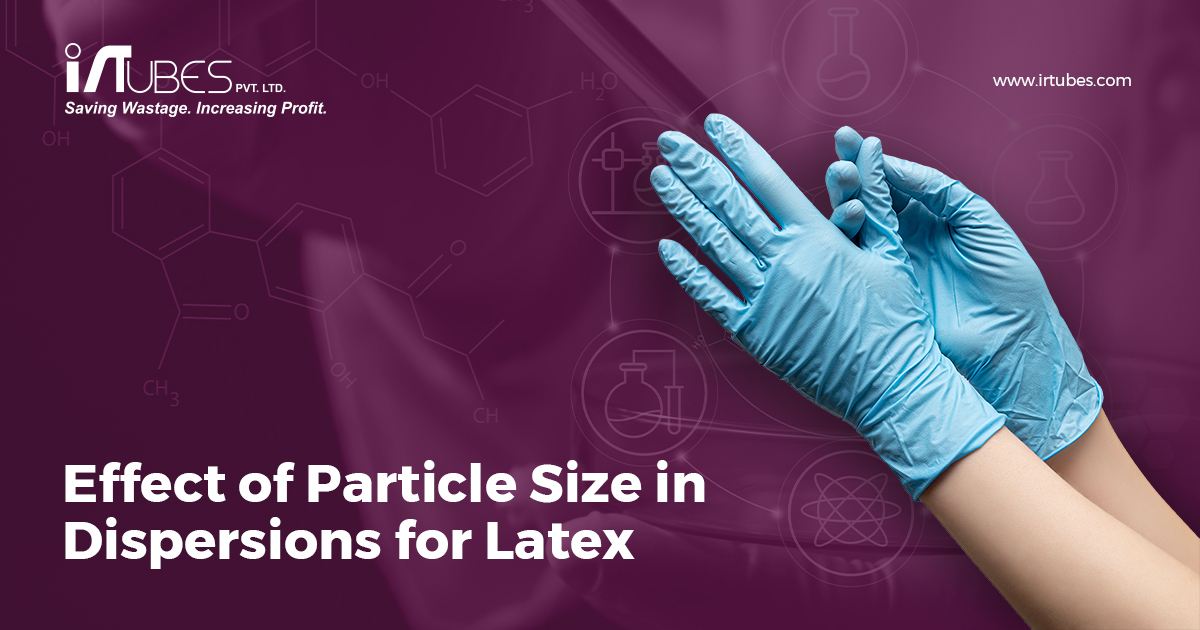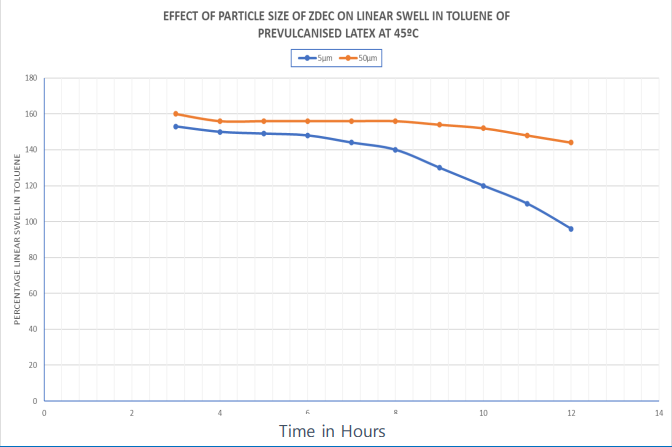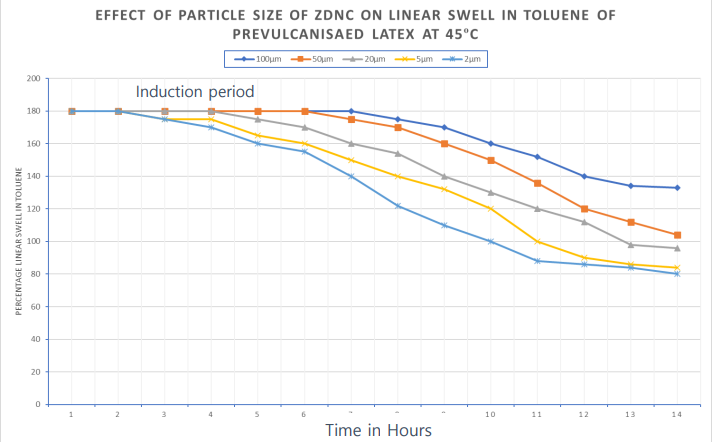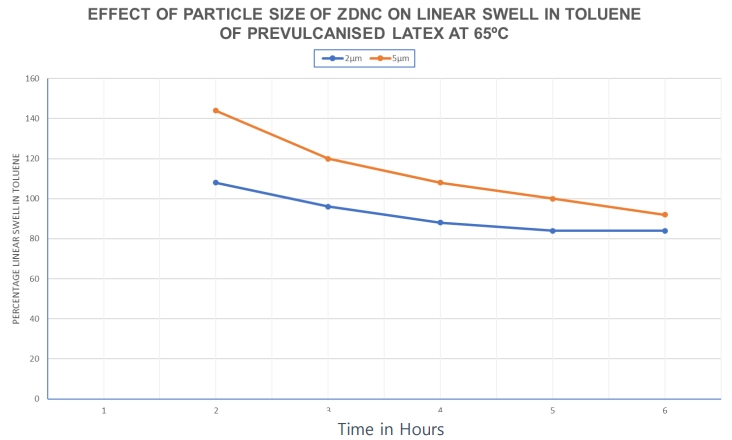
A few months ago we published an article ( link ), making the case of use for readymade dispersions whilst compounding for latex. Apart from the functional and technical requirements of users of additive dispersions, Mr. Paul McKavanagh, Ex Director – Aquaspersions, Malaysia has set up a very valiitive dispersions, Mr. Paul McKavanagh, Ex Director – Aquaspersions, Malaysia has set up a very valid argument and made it very clear why paying a small reasonable raw material cost premium for outsourced dispersions makes very good business sense.
The glove market has been growing and will continue to grow at a much higher rate than the general economic growth. It is estimated to grow at a CAGR of 11.4% during the forecast period of 2022-2028. The growth of the India medical gloves market can be attributed to the increasing prevalence of various infectious and chronic diseases and the rising demand for diagnostic tests. One might say that this industry is almost recession proof. There has been greater focus during and after the pandemic on health issues and these issues are here to stay. State governments, especially in the north of India have ramped up their healthcare delivery and has opened new markets for medical gloves.
Despite improvements in technology and know-how, producing the required quality of additive dispersions for latex is not as simple as it sounds. The dispersions contain solid particles dispersed into the liquid (water) phase. Mostly the solid particles, especially additives like sulphur, accelerators, pigment and zinc oxide have a significantly higher density than water. As a result, there is a strong natural tendency for these materials to settle down due to the forces of gravity. This can result in the dispersion being un-usable due to heavy sedimentation, and of course after compounding the dispersion into latex, the same natural forces apply to the solid additives now inside the compounded latex.
The medical gloves industry has had to overcome concerns relating to health issues, including N-nitrosamines and Type IV allergies, in the rubber products. We now see safer chemical accelerators used in natural rubber latex.
Zinc diisononyldithiocaramate (an accelerator) is highly crystalline compared to the more traditional accelerators like zinc diethyldithiocarbamate (ZDEC) or zinc dibutyldithiocarbamate (ZDBC) which are amorphous. Being crystalline and amorphous they are water insoluble and have to be milled as dispersion to reduce their average particle size to an appropriate level. If this is not done to specifications, it will lead to sedimentation in the dispersion and compounded latex and would be wasteful and will lead to reduced quality in the finished products.
It is widely believed in the industry that there exists a correlation between the particle size and the resulting rate of prevulcanisation in NR latex. It has been established that the smaller particle size of the accelerator and the larger the specific surface area, is more efficient in vulcanisation of NR latex. The benefits being: maximising prevulcanisation rates, minimal accelerator dosage and reduced glove defects.
The accelerator (ZDNC) is manufactured as a free flowing ‘hard’ crystalline material of high particle size. One would question why time, energy and money is spent to reduce the particle size (typically less than 5 microns) if particle size did not matter? What follows is technical data to support this fact.
We have summarised the importance of Particle size of active ingredient. Readers, if interested, may read the validation of our findings after the summary.
We summarise below the importance of Particle size of active ingredients in Latex dispersion
| Outcome | ||||
| 1 | Particle size reduction is inversely proportional to surface area | |||
| So, if e.g., particle size reduces the active surface area of chemical increases | ||||
| Data when tested on particle size analyser | ||||
| Accelerator With Particle size – 100 Micron has surface are of 144 m2/gm | ||||
| Accelerator With Particle size – 2 Micron has surface are of 6089 m2/gm | ||||
| 2 | Data shows based on linear swell test in toluene that | |||
| The temperature required for latex film drying & reaching same state of cure | Energy cost reduction | |||
| reduces from 55 Deg C to 45 Deg C | ||||
| Crosslink formation in dry latex film increased as lower particle size = Higher surface area | Consistent Higher physical properties – Higher yield & Lower rejection | |||
| are used | ||||
| Linear Toluene swell at Room temperature reduced from 130 % to 80 % | Lower dosages of active ingredients | |||
| 3 | Above data indicated that particle size – surface area of dry ingredient -along with uniform | |||
| stable dispersion formation in very important aspect of latex dispersion. | ||||
| 4 | Inhouse set up with basic level of equipment – will not produce the consistent dispersion | Average input RM quality = Resultant product is of average quality | ||
| meeting above stated functional requirements batch to batch | ||||
| 5 | So, it is important to understand the cost we are paying for better consistent product – which | Notional cost | ||
| In turn give much improved products. | ||||
Studies* have been carried out keeping the following criteria in focus:
- The particle size must be comparable to the particle size of the latex (diameter 0.25 – 0.8 micron)
- Should be capable of mixing well
- Sedimentation should be minimised on storage
- Particle size must be less than 5 microns and ideally 1 or 2 microns for uniform distribution.
- Reduction in potential film flaws and improvement in clarity for ‘dipped fine film’ products viz. condoms (Avg. 70 microns thick) and NR gloves (Avg.150 microns thick).
There is now evidence to show that if the accelerator particle size is reduced to 3 to 6 micron or less, then the accelerators have more activity and hence less accelerator is required to produce optimal latex curing.
*Prof D. C. Blackley: Polymer Latices and Technology, 2nd Edn, Vol 1-3, Chapman and Hall, London 1997 & Wei Al-long, Wei Tin-xion, Yong Feny-we et al (Vol. 48, 9, 2001 Journal of the Rubber Industry of China)
A brief summary on the study that aims to
- Demonstrate a clear link between particle size of accelerator ZDNC and the resultant rate of prevulcanisation of NR latex.
- Show that the max. rate of crosslink formation is determined by particle size of ZDNC
- Show relationship between the max. rate of crosslink formation and the relative specific surface area of the ZDNC accelerator.
For the purpose of the study zinc diisononyldithiocaramate (ZDNC) and zinc diethyldithiocarbamate (ZDEC) were used as dispersions
Formulations for the Production of ZDNC and ZDEC dispersions
| Ingredient | Percentage |
| Non-ionic surfactant (Carbowet GA-211) | 1.33 |
| Deionised water | 63.4 |
| ZDNC | 35 |
| Xanthan Gum (for viscosity) | 0.27 |
| Ingredient | Percentage |
| Dispersing Agent | 2.1 |
| Deionised water | 56.9 |
| ZDEC powder or crystals | 40 |
| Ammonium caseinate | 1 |
| *Naphthalene sulfonic acid formaldehyde condensation product, sodium salt |
- ZDNC & ZDEC dispersions were produced at 35% and 40% active, respectively, by grinding using a pebble mill.
- After adding the formulation ingredients, the dispersion was ground for the appropriate time with particle size measurements taken at regular intervals.
- The process was repeated several times to produce a range of dispersions with difference particle size distributions.
Particle Size Analysis of ZDNC and ZDEC dispersions
| Average Particle Size (Dv50) in microns | |||||
| ZDNC | 2 | 5 | 20 | 50 | 100 |
| ZDEC | 5 | 50 | |||
| Relative Specific Surface Area/m2/g | |||||
| ZDNC | 6089 | 1696 | 542 | 323 | 144 |
| ZDEC | 1645 | 427 | |||
- Malvern Mastersizer 3000E was used to measure the size of particles
- The data was analysed to calculate the size of the particles that created a scattered pattern, using the Mie theory of light scattering
- Five measurements were taken (as can be seen in the chart above) and averaged. The particle size is reported as volume equivalent sphere diameter.
- The software calculated the relative specific surface area for each of the dispersions (as seen in the chart above).
Prevulcanisation Study in High Ammonia NR Latex
| FORMULATION | ||||
| Conc % | Ingredient | Dry Weight (phr) | ||
| 60 | HANR Latex | 100.2 | ||
| 30 | Potassium Caprylate | 0.5 | ||
| 20 | Porassium Hydroxide | 0.5 | ||
| 60 | Sulfur | 1 | ||
| 50 | Antioxidant | 0.5 | ||
| 35 | ZDNC dispersion | 0.8 | ||
| Water to make 50% solids
HANR (High Ammonia natural rubber latex) |
||||
| Percentage Linear Swell | Degree of Vulcanisation | |||
| > 160% | Unvulcanised | |||
| 100 -160% | Lightly Vulcanised | |||
| 80 – 100% | Moderately Vulcanised | |||
| < 80% | Fully Vulcanised | |||
- 7 latex compounds were prepared using the formulation is indicated above
- 600 ml of compounded latex was placed in preheated water bath upto 14 hours, being stirred every 15 mins. To prevent sedimentation
- After an hour 5 ml sample was removed and used to prepare a thin film around 200 mm thick
- The room temperature dried thin film was used to measure the percentage linear swell in toluene. This was used as an assessment of cross linking.**
** Ref: P J. Murray, (1982, NR Technology, 13, 31
Effect of ZDEC Particle Size on Cross-Linking

Accelerator ZDEC at 45 degrees Centigrade

Accelerator ZDEC at 55 degrees Centigrade
Effect of ZDNC Particle Size on Cross Linking

Accelerator ZDNC at 45 degrees Centigrade

Accelerator ZDNC at 65 degrees Centigrade
Rate of Cross Link formation and relative specific surface area
- We see a relationship between the ZDNC accelerator particle size and the max. rate of crosslink formation
- Max. rates of cure were determined from the linear portion of the swelling curves at 45 degrees Centigrade
THERE IS A CLEAR LINEAR RELATIONSHIP BETWEEN MAX. RATE OF CROSSLINK FORMATION AND RELATIVE SPECIFIC SURFACE AREA OF ZDNC

| Average Particle Size – Approx. (Microns) | Relative Specific Surface Area (m2/g) | Max. Relative Rate of Crosslink Formation | Induction Time (Hrs) |
| 2 | 6089 | 13.3 | 3.9 |
| 5 | 1696 | 11.4 | 4.5 |
| 20 | 542 | 10.2 | 5.1 |
| 50 | 323 | 9.9 | 6.6 |
| 100 | 144 | 9.8 | 7.9 |
Re-cap from the data above
- We have observed that the rate of prevulcanisation is directly proportional to the specific surface area of ZDNC accelerator.
- Vulcanising ingredients must partially dissolve in the latex serum to form the active sulfurating agent before prevulcanisation, which is in line with the induction time
- Max. rate of dissolution and max. prevulcanisation rate are directly proportional to the specific surface area of the ZDNC accelerator
- Smaller the particle size, the higher is the specific surface area
- When temperature is higher, the dissolution rate is also higher
- Observation for the experiment is for both crystalline ZDNC and amorphous ZDEC accelerator
Conclusion
The data clearly shows that the particle size of the ZDNC accelerator and consequently the larger the specific surface area, the more efficient is the vulcanisation of the NR latex. Given this fact there are a number of benefits for glove manufacturers should they use readymade dispersions like ZDNC.
With improvement in ingredient efficiency, improvement in handling of the accelerator dispersion upon storage or use in latex, significant reduction in chemical dosage thereby leading to reduction in defects in the rubber articles, manufacturers who use these dispersions can only hope to gain. As pointed out in the article (link) by Mr. Paul McKavanagh
- Rapid expansion of operations to gain economies of scale and new customers is easier, both in practical terms (less space, less equipment to buy) and cash flow
- Management time is used more effectively, for example to add value through product segmentation, as opposed to making necessary improvements to a noncore activity which will not impact so much to the bottom line.
- All kinds of organizations are coming to terms with the need to focus on core competency, outsource what they used to make themselves and import high quality raw materials to facilitate major improvements in business performance and finished products.
Coupled with these benefits are also the benefits of health, safety and the environment where handling hazardous and dusty chemicals by labour is minimised. Reduction in chemical effluent and waste is also an area that saves the environment.
Raju Jethmalani
Share on:
